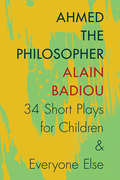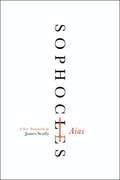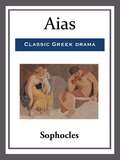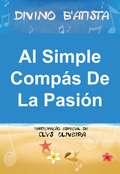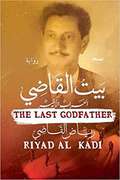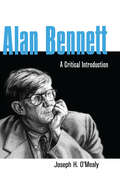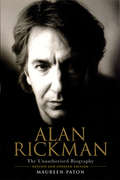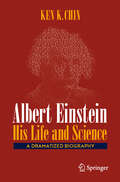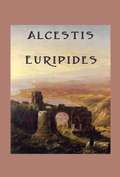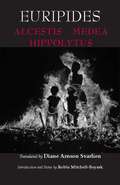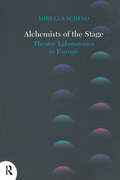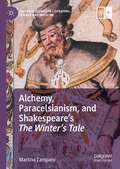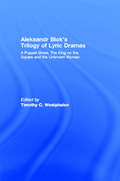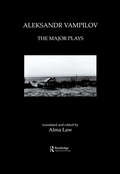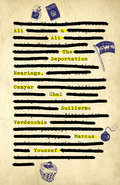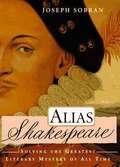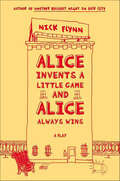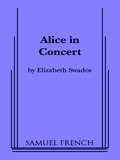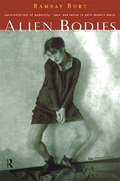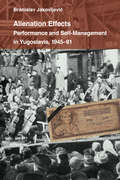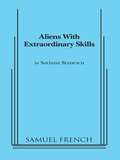- Table View
- List View
Ahmed the Philosopher: Thirty-Four Short Plays for Children and Everyone Else
by Alain BadiouEnglish-speaking readers might be surprised to learn that Alain Badiou writes fiction and plays along with his philosophical works and that they are just as important to understanding his larger intellectual project. In Ahmed the Philosopher, Badiou's most entertaining and accessible play, translated into English here for the first time, readers are introduced to Badiou's philosophy through a theatrical tour de force that has met with much success in France. <P><P> Ahmed the Philosopher presents its comic hero, the "treacherous servant" Ahmed, as a seductively trenchant philosopher even as it casts philosophy itself as a comic performance. The comedy unfolds as a series of lessons, with each "short play" or sketch illuminating a different Badiousian concept. Yet Ahmed does more than illustrate philosophical abstractions; he embodies and vivifies the theatrical and performative aspects of philosophy, mobilizing a comic energy that exposes the emptiness and pomp of the world. Through his example, the audience is moved to a living engagement with philosophy, discovering in it the power to break through the limits of everyday life.
Ahora y siempre: Memorias
by Diane KeatonLas memorias íntimas de Diane Keaton «¿Casarme? Yo no quería ser la mujer de nadie. Lo que me apetecía era ser una chica sexi, alguien con quien darse el lote.»Diane Keaton Ahora y siempre es un libro emocionante y divertido como la propia Diane Keaton. Cuenta la historia de una chica corriente que se convirtió en una mujer extraordinaria y el papel fundamental que su madre jugó en todo ello. Esta es la autobiografía de una de las actrices más aclamada de todos los tiempos pero también el relato vital de una madre y una hija, de sus sueños individuales y compartidos.
Aias
by SophoclesAmong the most celebrated plays of ancient Athens, Aias is one of seven surviving dramas by the great Greek playwright, Sophocles, now available from Harper Perennial in a vivid and dynamic new translation by award-winning poet James Scully. Still powerful and remarkably timely thousands of years after its creation, Aias is the moving story of a soldier returning home victorious from the Trojan War, only to discover he has lost his life’s purpose. This is Sophocles, vibrant and alive, for a new generation.
Aias
by SophoclesSophocles' play is a famous retelling of Aias's (Ajax's) demise. After the armor is awarded to Odysseus, Aias feels so insulted that he wants to kill Agamemnon and Menelaus. Athena intervenes and clouds his mind and vision, and he goes to a flock of sheep and slaughters them, imagining they are the Achaean leaders, including Odysseus and Agamemnon. When he comes to his senses, covered in blood, he realizes that what he has done has diminished his honor, and decides that he prefers to kill himself rather than live in shame.
Al Simple Compás De La Pasión: Lindo, sorprendente y joven (Al Simple Compás De La Pasión #1)
by Divino B'AtistaMarina es una pequeña ciudad litoral que todos los años se convierte en escenario del gran festival de música "Aguas Sonoras". Durante dos días, la tranquilidad de Marina da lugar a una agitación frenética de jóvenes de la ciudad y alrededores. Daniel Vandres es cantante del grupo "Sound of Silence", atracción principal del festival. Él, por cierto, no imaginaba que se cruzaría en el camino de la soñadora Josy, quien sólo piensa en el trabajo pero es convencida por su hermana de ir al festival y divertirse un poco. Roberta nutre un amor platónico por Daniel desde su infancia y es capaz de cualquier locura con tal de que el cantante la note. Es en medio de una de esas locuras que ellas conocen a Beto y a Miguel, dos jóvenes que harán a Josy repensar un poco sobre su concepto de la diversión.
Al-Kady House "The Last God-Father
by Riyad Al Kadihttps://www.amazon.co.uk/Riyad-Al-Kadi/e/B00J9J8HBW Great Book, to read it describes the world of the iraqi Mafia and the World of Weapon Trade. you will never be happy in this World full of betrayal and hatred even from the close beloved ones to you, you never be safe it decribes the changes happened upon the Iraqi Society after the Coup aganist the King,
Alan Bennett: A Critical Introduction (Studies in Modern Drama)
by Joseph O'MealyAlan Bennett is perhaps best known in the UK for the BBC production of his Talking Heads TV plays, while the rest of the world may recognize him for the film adaptation of his play, The Madness of King George. O'Mealy points out that Bennett is a social critic strongly influenced by Beckett and Swift, interested in depicting and analyzing the role playing of everyday life, a'la sociologist Ervin Goffman.
Alan Rickman: The Unauthorised Biography
by Maureen PatonIn this revised and updated biography, Maureen Paton encompasses the private, professional and political life of this most enigmatic, charismatic and intensely private of actors.
Albert Einstein – His Life and Science: A Dramatized Biography
by Ken K. ChinThis book is part biographical account, part novel, and part popular science. The basic facts are historically true, but many episodes have additionally been dramatized with plausible content that brings the personal story to life in the style of a novel or movie script. This genre of a “dramatized biography" of scientists was first created by the author 45 years ago and became a great success selling over half a million copies in China, where it has been in particular demand for teaching. But this is not the whole story: In addition, the book explains, in a serious yet accessible manner, the basics of Einstein’s scientific work, especially its impact on contemporary cosmology, astronomy, and physics. As an experienced teacher of relativity and astronomy for high-school and university students, the author knows how to make profound scientific subjects accessible, and his presentation is as fascinating as a detective story. Readers will learn not only about the historical setting but also about the challenges and frustrations faced by Einstein, about his breakthroughs and triumphs, as well as the far-reaching significance of his theory of relativity, quantum mechanics, and other scientific achievements. The reader will come to understand why, of all the billions of people living in the twentieth century, Albert Einstein was singled out as the “Person of the Century.”
Alcestis
by Euripides"The Alcestis would hardly confirm its author's right to be acclaimed 'the most tragic of the poets.' It is doubtful whether one can call it a tragedy at all. Yet it remains one of the most characteristic and delightful of Euripidean dramas, as well as, by modern standards, the most easily actable. And I notice that many judges who display nothing but a fierce satisfaction in sending other plays of that author to the block or the treadmill, show a certain human weakness in sentencing the gentle daughter of Pelias." So begins the introduction to the Alcestis by Euripides.
Alcestis, Medea, Hippolytus
by Euripides Diane Arnson Svarlien Robin Mitchell-BoyaskThis new volume of three of Euripides' most celebrated plays offers graceful, economical, metrical translations that convey the wide range of effects of the playwright's verse, from the idiomatic speech of its dialogue to the high formality of its choral odes.
Alchemists of the Stage: Theatre Laboratories in Europe (Routledge Icarus Ser.)
by Mirella SchinoWhat is a theatre laboratory? Why a theatre laboratory? This book tries to answer these questions focusing on the experiences and theories, the visions and the techniques, the differences and similarities of European theatre laboratories in the twentieth century. It studies in depth the Studios of Stanislavski and Meyerhold, the school of Decroux, the Teatr Laboratorium of Jerzy Grotowski and Ludwik Flaszen, as well as Eugenio Barba's Odin Teatret. Theatre laboratories embody a theatre practice which defies the demands and fashions of the times, the usual ways of production and the sensible functions which stage art enjoys in our society. It is a theatre which refuses to be only art and whose radical research forges new conditions with a view to changing both the actor and the spectator. This research transforms theatrical craft into a laboratory which has been compared to the laboratory of the alchemists, who worked not on material but on substance. The alchemists of the stage did not operate only on forms and styles, but mainly on the living matter of the theatre: the actor, seen not just as an artist but above all as a representative of a new human being. Laboratory theatres have rarely been at the centre of the news. Yet their underground activity has influenced theatre history. Without them, the same idea of theatre, as it has been shaped in the course of the twentieth century, would have been different. In this book Mirella Schino recounts, as in a novel, the vicissitudes of a group of practitioners and scholars who try to uncover the technical, political and spiritual perspectives behind the word laboratory when applied to the theatre.
Alchemy, Paracelsianism, and Shakespeare’s The Winter’s Tale (Palgrave Studies in Literature, Science and Medicine)
by Martina ZamparoThis book explores the role of alchemy, Paracelsianism, and Hermetic philosophy in one of Shakespeare’s last plays, The Winter’s Tale. A perusal of the vast literary and iconographic repertory of Renaissance alchemy reveals that this late play is imbued with several topoi, myths, and emblematic symbols coming from coeval alchemical, Paracelsian, and Hermetic sources. It also discusses the alchemical significance of water and time in the play’s circular and regenerative pattern and the healing role of women. All the major symbols of alchemy are present in Shakespeare’s play: the intertwined serpents of the caduceus, the chemical wedding, the filius philosophorum, and the so-called rex chymicus. This book also provides an in-depth survey of late Renaissance alchemy, Paracelsian medicine, and Hermetic culture in the Elizabethan and Jacobean ages. Importantly, it contends that The Winter’s Tale, in symbolically retracing the healing pattern of the rota alchemica and in emphasising the Hermetic principles of unity and concord, glorifies King James’s conciliatory attitude.
Aleksandr Blok's Trilogy of Lyric Dramas: A Puppet Show, The King on the Square and the Unknown Woman (Routledge Harwood Russian Theatre Archive Ser.)
by Timothy C. WestphalenAleksandr Blok's Trilogy of Lyric Dramas gathers together for the first time in English translation the first three plays by Aleksandr Blok, the pre-eminent poet of Russian Symbolism and one of the greatest poets of the twentieth century. The three plays that constitute the trilogy - A Puppet Show, The King on the Square and The Unknown Woman - are pivotal documents in the development of modernist drama. In his productions of A Puppet Show; and The Unknown Woman, Meyerhold first began to work the basic tenets of his approach to grotesque and constructivist theatre. Moreover, A Puppet Show provided the inspiration and much of the foundation for Meyerhold's theoretical writings. As a result, these plays are indispensable to any student of Meyerhold or modernist theatre. The plays are presented in the context of the poetry from which they issued in order to suggest how Blok developed the themes and motifs of the plays in other genres.
Aleksandr Vampilov: The Major Plays (Russian Theatre Archive Ser. #Vol. 6.)
by Alma LawFirst Published in 1996. Routledge is an imprint of Taylor & Francis, an informa company.
Alex Ko: From Iowa to Broadway, My Billy Elliott Story
by Alex KoHe could be a star for all we knowWe dont know how far he can goHe could go and he could shineNot just stay here counting time, Son, weve got the chance to let him live. These are lyrics from Billy Elliot, the show that made young Alex Kos incredible dream of performing come true. And just like the character of Billy, Alex beat all the odds to land the starring role in Billy Elliot on Broadway at age thirteen. This is his powerful true story. Alexs personal firsthand tale of his journey from small-town Iowa to New York City is passionate and moving. With extraordinary drive and rare tenacity, Alex makes the unthinkable real, determined to hold on to his dream of performing despite all that he had to overcome--his dads death from cancer, financial struggles, countless auditions to finally land the part of Billy, only to suffer a crushing injury, but ultimately making his triumphant return to the stage. Alexs inspiring story is an exciting exclusive look at the world of backstage Broadway, told through the eyes of a kid from Iowa fresh off the plane, without money or famous connections, who simply dared to dream big.
Ali & Ali
by Guillermo Verdecchia Marcus Youssef Camyar ChaiIn this sequel to the hilarious and hard-hitting The Adventures of Ali & Ali and the aXes of Evil, the agitprop collaborative team of Camyar Chai, Guillermo Verdecchia, and Marcus Youssef turns its idiosyncratic brand of political satire to new global realities.Following the election of U.S. president Barack Obama in 2008, collective optimism for a more tolerant, peaceful, and co-operative post- Bush world spreads to Canada - and to the backroom of Salim's Falafel Shoppe in Toronto. There, Ali Hakim and Ali Ababwa, refugee entertainers from the fictitious, war-torn country of Agraba, are inspired to write a stage play in celebration of the new president's message of "hope and change." The premiere of their Yo Mama, Osbama! (or, How We Learned to Stop Worrying and Love the Half-Black President) halts abruptly when an RCMP constable arrives at the theatre and arrests the pair for its financial ties to the Agrabanian People's Front, an alleged "terrorist organization" on the Canadian government's watch list.Continuity becomes more apparent than change when Ali and Ali are swiftly put on trial. As the hapless playwrights try to defend themselves in the farcical deportation hearing that unfolds, racial and cultural stereotypes are invoked - and lampooned - as quickly as dubious evidence is presented. But, in the midst of the biting comedy, more serious questions are raised about the cost for some when we endeavour to protect the "freedoms" of others.Cast of 1 woman and 3 men.
Alias Shakespeare: Solving the Greatest Literary Mystery of All Time
by Joseph Sobran"Who wrote Shakespeare's plays? Today, the long-standing and impassioned debate about the so-called authorship question is perceived by Shakespearean scholars as the preserve of eccentrics and cranks. But in this contrarian work of literary detection, author Joseph Sobran boldly reopens this debate and allows the members of Shakespeare's vast contemporary public to weigh all the evidence and decide for themselves." "An enormous shelf of biographical scholarship has grown up over the past 300 years around the "Swan of Avon." But what are these histories based on? Revealing that no more than a handful of fragmentary documents attest to Shakespeare's existence - and virtually none which link him to the plays themselves - Sobran delightfully debunks this elaborate egalitarian myth concocted in equal parts of speculation, wishfulness, and fantasy." "More importantly, Sobran shows how many questions the myth leaves unanswered: How could a provincial actor from Stratford gain such an intimate knowledge of court life? How could he know so much of classical authors and not own a single book? How could he write compromising love sonnets to his social superior, the powerful Earl of Southampton? How could he know so much of Italy, a place he never visited? Why was there no notice of the famous writer's death in 1616? Why, in short, does Shakespeare remain such an obscure and shadowy figure?" "Methodically demolishing the case for "Mr. Shakspere," Sobran shows it is highly implausible that he wrote the poems and plays we know as The Works of William Shakespeare. Other candidates exist, of course, including Ben Jonson, Christopher Marlowe, and Francis Bacon. Sobran dispenses with these claimants, then sets forth the startlingly persuasive case for Edward de Vere, the seventeenth Earl of Oxford." "Oxford was a widely traveled, classically educated member of the Elizabethan court. A swashbuckling spendthrift, he swung high and low in the eyes of his peers. Having spent most of his fortune on adventures in Italy and elsewhere on the Continent - like Hamlet he was captured by pirates in the English Channel - he fell into disrepute for reasons that included rumors about his homosexuality. Still he topped many lists of the best Elizabethan poets at the time, even ranking above Edmund Spenser and Sir Philip Sidney. He was an avid book collector, and a love of the literary arts ran in his family. His uncle not only pioneered the sonnet form that came to be known as Shakespearean, he also translated the English edition of Ovid that indisputably guided Shakespeare's pen. More strikingly, Oxford was the ward of Lord Burghley - the man widely acknowledged as the model for the character Polonius in Hamlet. Ultimately, Sobran shows us why a disgraced nobleman such as Oxford would have sought solace in the anonymity of writing pseudonymous plays and poetry." --BOOK JACKET. Title Summary field provided by Blackwell North America, Inc. All Rights Reserved
Alice By Heart: Victim Sidekick Boyfriend Me; Journey To X; Little Foot; Prince Of Denmark; Socialism Is Great; The Grandfathers; Alice By Heart; Generation Next; So You Think Youre A Superhero?; The Ritual (Play Anthologies Ser.)
by Steven SaterA young girl takes refuge in a London Tube station during WWII and confronts grief, loss, and first love with the help of her favorite book, Alice in Wonderland, in the debut novel from Tony Award-winning playwright Steven Sater.London, 1940. Amidst the rubble of the Blitz of World War II, fifteen-year-old Alice Spencer and her best friend, Alfred, are forced to take shelter in an underground tube station. Sick with tuberculosis, Alfred is quarantined, with doctors saying he won't make it through the night. In her desperation to keep him holding on, Alice turns to their favorite pastime: recalling the book that bonded them, and telling the story that she knows by heart--the story of Alice in Wonderland. What follows is a stunning, fantastical journey that blends Alice's two worlds: her war-ravaged homeland being held together by nurses and soldiers and Winston Churchill, and her beloved Wonderland, a welcome distraction from the bombs and the death, but a place where one rule always applies: the pages must keep turning. But then the lines between these two worlds begin to blur. Is that a militant Red Cross Nurse demanding that Alice get BACK. TO. HER. BED!, or is it the infamous Queen of Hearts saying...something about her head? Soon, Alice must decide whether to stay in Wonderland forever, or embrace the pain of reality if that's what it means to grow up. In this gorgeous YA adaption of his off-Broadway musical, the Tony Award-winning co-creator of Spring Awakening encourages us all to celebrate the transformational power of the imagination, even in the harshest of times.
Alice Invents a Little Game and Alice Always Wins: A Play
by Nick FlynnIn this first play from the award-winning memoirist and poet Nick Flynn, four strangers meet during a blackout on a New York City sidewalk. Gideon finds himself locked out of his apartment, stranded on the street with nothing but a television and the company of three individuals, each mysterious in their own way: the specter-like Alice, ringleader of the neighborhood; Esra, a fifteen-year-old girl whose mother is MIA—again; and Ivan, a stranded businessman trying to make his way home. As Gideon makes futile attempts to break into an apartment that may or may not be his, an unsettling connection between Ivan and Esra develops while Alice and Gideon look on helplessly. Unable to make sense of their predicament, let alone alter it, the four float aimlessly in and out of seeming reality only to find themselves more lost when the electricity finally comes back on. Once again exploring the tenuous membrane that separates comfortable, everyday existence from the desperate margins of society, Flynn portrays an urban dystopia disturbingly similar to our own world while poignantly tapping into the loneliness and peril of city life.
Alice in Concert
by Elizabeth SwadosMusical \ Elizabeth Swados. \ 6m, 6f, w/7 piece musical accompaniment. \ Bare stage. \ Meryl Streep starred as "Alice" at New York's Public Theatre. Later aired on PBS, this imaginative rendering of the Lewis Carroll classic is performed concert-style on a bare stage, the actors in modern rehearsal clothes. Stylistically, the music ranges from rock to country/western to calypso, as the outlandish characters of "Wonderland" are reinterpreted in this "story theatre"-type setting. \ "Ms. Swados' new dramatized cantata...made me think of Carroll very deeply...[She] magnificently catches most of Carroll's divine nuttiness."-The New York Post
Alien Bodies: Representations of Modernity, 'Race' and Nation in Early Modern Dance
by Ramsay BurtAlien Bodies is a fascinating examination of dance in Germany, France, and the United States during the 1920s and 1930s. Ranging across ballet and modern dance, dance in the cinema and Revue, Ramsay Burt looks at the work of European, African American, and white American artists. Among the artists who feature are: * Josephine Baker * Jean Borlin * George Balanchine * Jean Cocteau * Valeska Gert * Katherine Dunham * Fernand Leger * Kurt Jooss * Doris Humphrey Concerned with how artists responded to the alienating experiences of modern life, Alien Bodies focuses on issues of: * national and 'racial' identity * the new spaces of modernity * fascists uses of mass spectacles * ritual and primitivism in modern dance * the 'New Woman' and the slender modern body
Alienation Effects: Performance and Self-Management in Yugoslavia, 1945-91
by Branislav JakovljevicIn the 1970s, Yugoslavia emerged as a dynamic environment for conceptual and performance art. At the same time, it pursued its own form of political economy of socialist self-management. Alienation Effects argues that a deep relationship existed between the democratization of the arts and industrial democracy, resulting in a culture difficult to classify. The book challenges the assumption that the art emerging in Eastern Europe before 1989 was either "official" or "dissident" art; and shows thatthe break up of Yugoslavia was not a result of "ancient hatreds" among its peoples but instead came from the distortion and defeat of the idea of self-management. The case studies include mass performances organized during state holidays; proto-performance art, such as the 1954 production of Waiting for Godot in a former concentration camp in Belgrade; student demonstrations in 1968; and body art pieces by Gina Pane, Joseph Beuys, Marina Abramovic, and others. Alienation Effects sheds new light on the work of well-known artists and scholars, including early experimental poetry by Slavoj Ž iž ek, as well as performance and conceptual artists that deserve wider, international attention.
Aliens with Extraordinary Skills
by Saviana StanescuDramatic Comedy / 2m, 2f, 2 either m or f / A dark comedy about a clown from the "unhappiest country in the world", Moldova, who pins her hopes on a US work visa. Chased by Homeland Security, a deportation letter deflates Nadia's enthusiasm and a pair of spike heels might be all it takes to burst her American Dream (or turn it into a nightmare...). New York City, with its special energy, seems like the perfect solution for her problems, but is it really? Luckily, Nadia is not alone in her journey: A Russian illegal immigrant, Borat, her fellow clown, tries to find his own path in the Big Apple, by working as a cab driver. Lupita, her Latina roommate, an exotic dancer and wanna-be actress, shows Nadia the tough side of the city. Meanwhile, Bob, an American washed-up musician finds himself in the relationship with the Moldovan girl. Aliens with Extraordinary Skills is based on true stories of immigration explored and fictionalized by a playwright who tries to understand her own story. The moral of the "fable" might be that - regardless our passport and native language - we are all "aliens" in search for love, understanding and a place to call "home". / "Saviana Stanescu's Aliens With Extraordinary Skills is an enchanting piece of theater...Ms. Stanescu's dialogue is flawlessly observant...the energy people talk about as New York's essence comes from all those newcomers' hopes and dreams in the air. Aliens pays tribute to that energy and at the same time radiates tons of its own." -The New York Times
Alimentary Performances: Mimesis, Theatricality, and Cuisine
by Kristin HuntA pea soda. An apple balloon. A cotton candy picnic. A magical mole. These are just a handful of examples of mimetic cuisine, a diverse set of culinary practices in which chefs and artists treat food as a means of representation. As theatricalised fine dining and the use of food in theatrical situations both grow in popularity, Alimentary Performances traces the origins and implications of food as a mimetic medium, used to imitate, represent, and assume a role in both theatrical and broader performance situations. Kristin Hunt's rich and wide-ranging account of food's growing representational stakes asks: What culinary approaches to mimesis can tell us about enduring philosophical debates around knowledge and authenticity How the dramaturgy of food within theatres connects with the developing role of theatrical cuisine in restaurant settings Ways in which these turns toward culinary mimeticism engender new histories, advance new epistemologies, and enable new modes of multisensory spectatorship and participation. This is an essential study for anyone interested in the intersections between food, theatre, and performance, from fine dining to fan culture and celebrity chefs to the drama of the cookbook.
